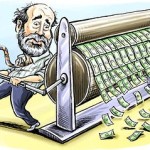It is fresh from the oven: I have just finalized 35-pages eBook on Global Market Outlook 2015. You could download here:
– Existing Newsletter subscribers: Please refer to the download link sent by email on 14 Nov 2014
– Non-newsletter subscribers: Please sign up (click on eBook image of ein55.com) before download
Aligning with the introduction of new eBook, I have prepared 3 exciting free workshop and short course (total worth $1000) in Nov & Dec 2014 for the readers:
1) Global Stock Market Outlook 2015
2) Best Timing to Profit from Singapore Property Market and REITS Stocks
3) Market Optimism Strategy with Integrated Fundamental and Technical Analysis
Free seats are limited (first come first served), please register through:
https://www.ein55.com/free-public-education-on-investment-programs-by-dr-tee/
eBook Table of Contents (Global Market Outlook 2015)
1. Mass Market Sentiment Survey
2. Review of 2014 Global Markets
3. US Economy and Market Outlook
3.1 US Government Debt Limit
3.2 Tapering of QE3
3.3 Fed Interest Rate Hike
3.4 US Job Market
3.5 US Property Market
3.6 US Bond Market
3.7 US Dollar, Inflation & Gold / Silver / Crude Oil
4. Regional Economy and Market Outlook
4.1 Europe Market
4.2 China Market
4.3 Hong Kong Market
4.4 Japan Market
4.5 Southeast Asia Market
5. Singapore Economy and Market Outlook
5.1 Singapore Stock Market
5.2 Singapore Property Market
6. Stock Market Potential for 2015 and Beyond
7. Conclusions and Recommendations
Acknowledgements
Appendix

